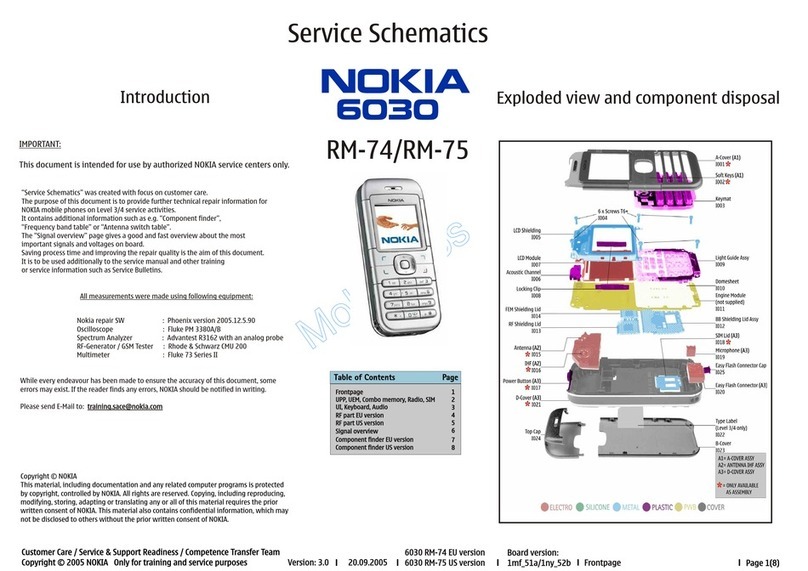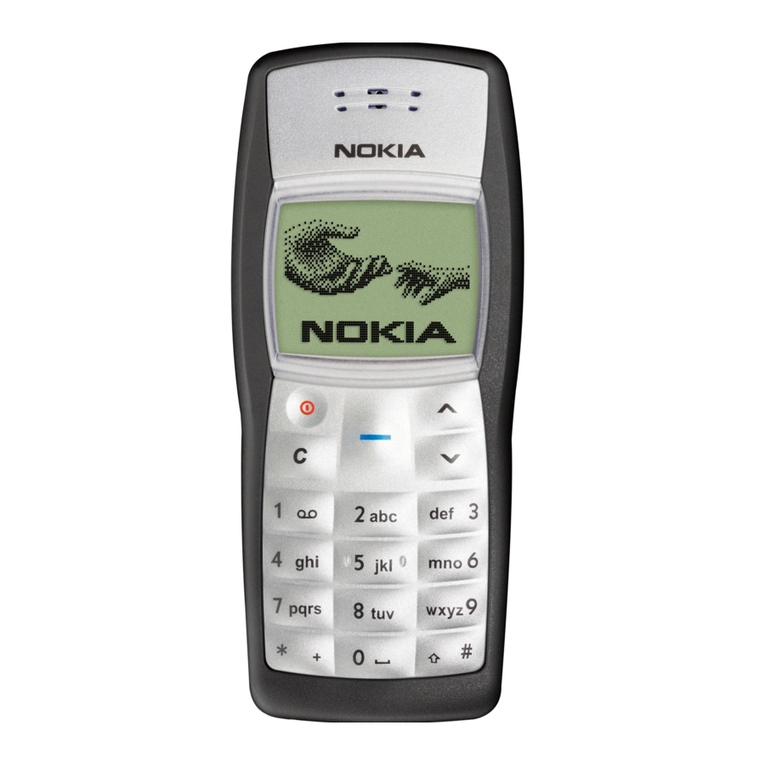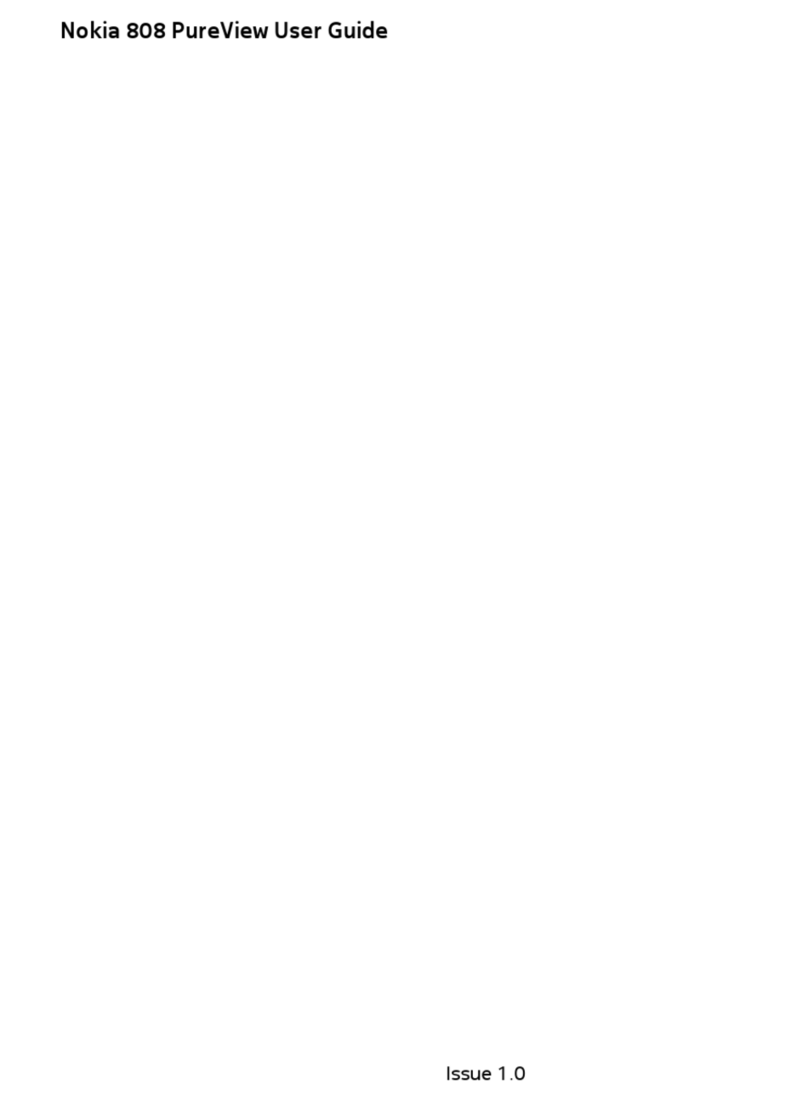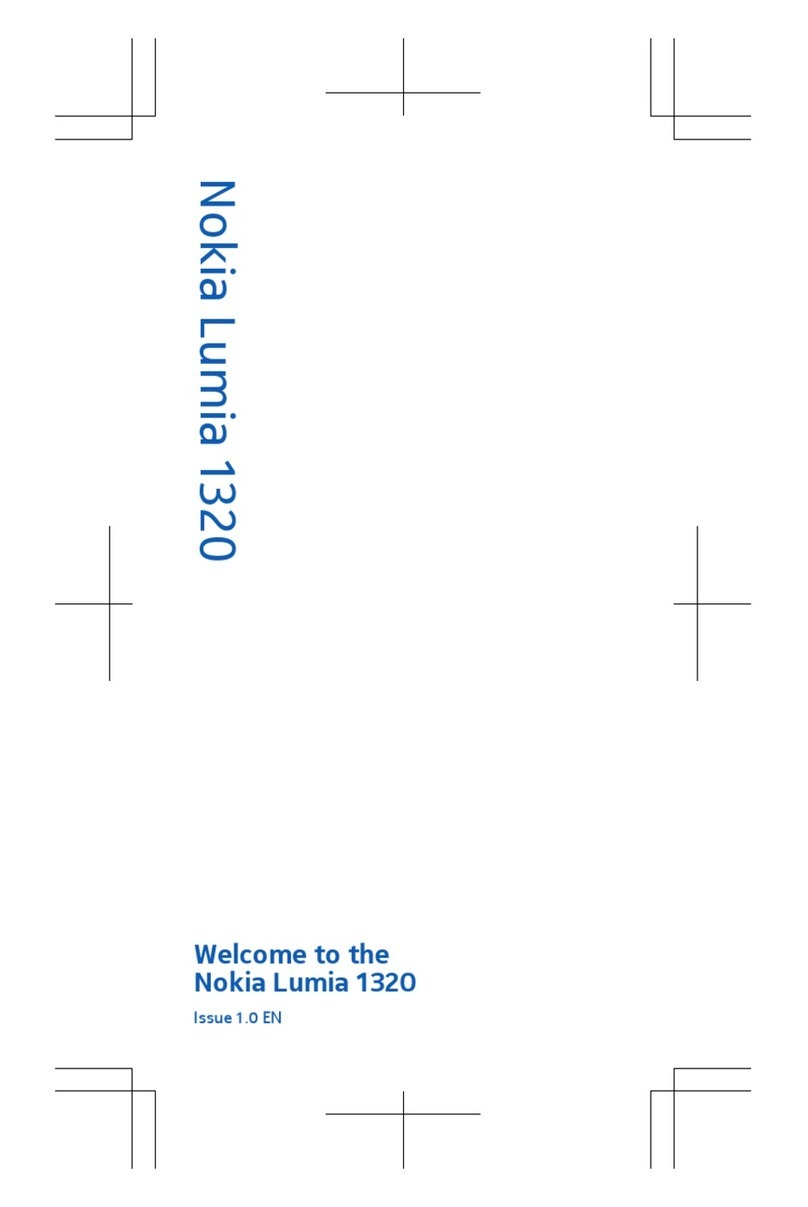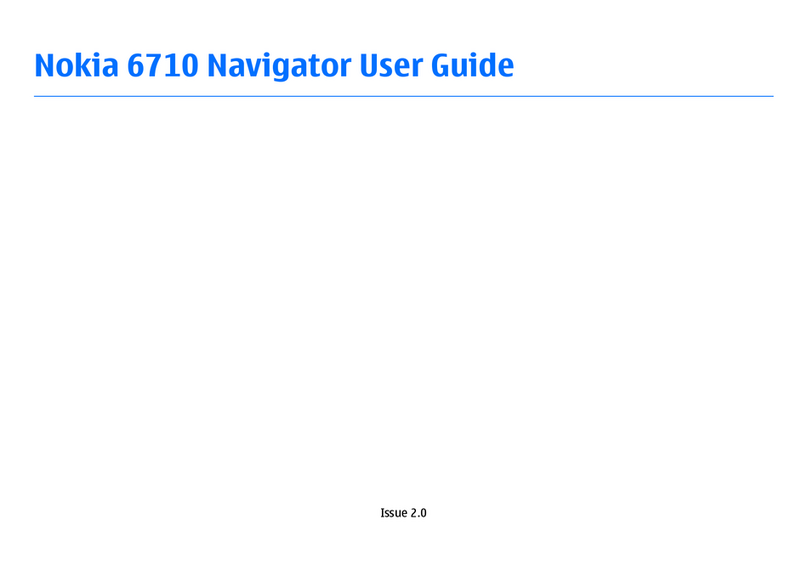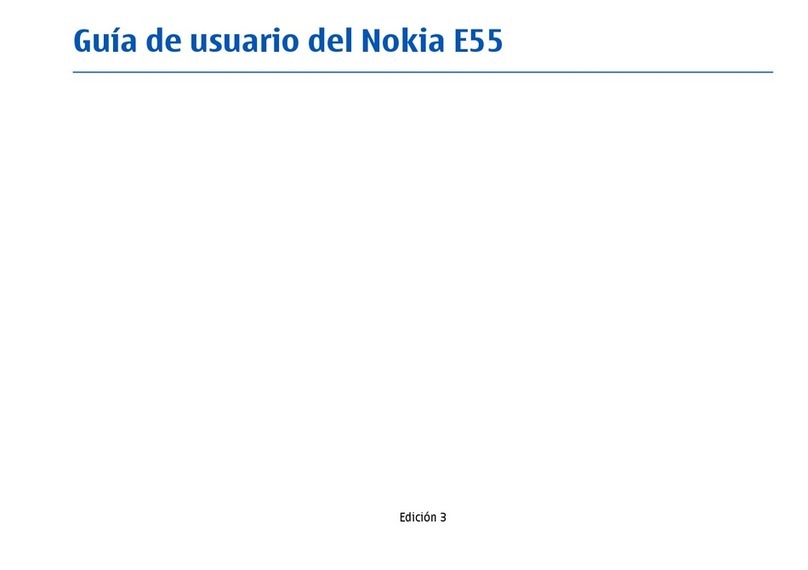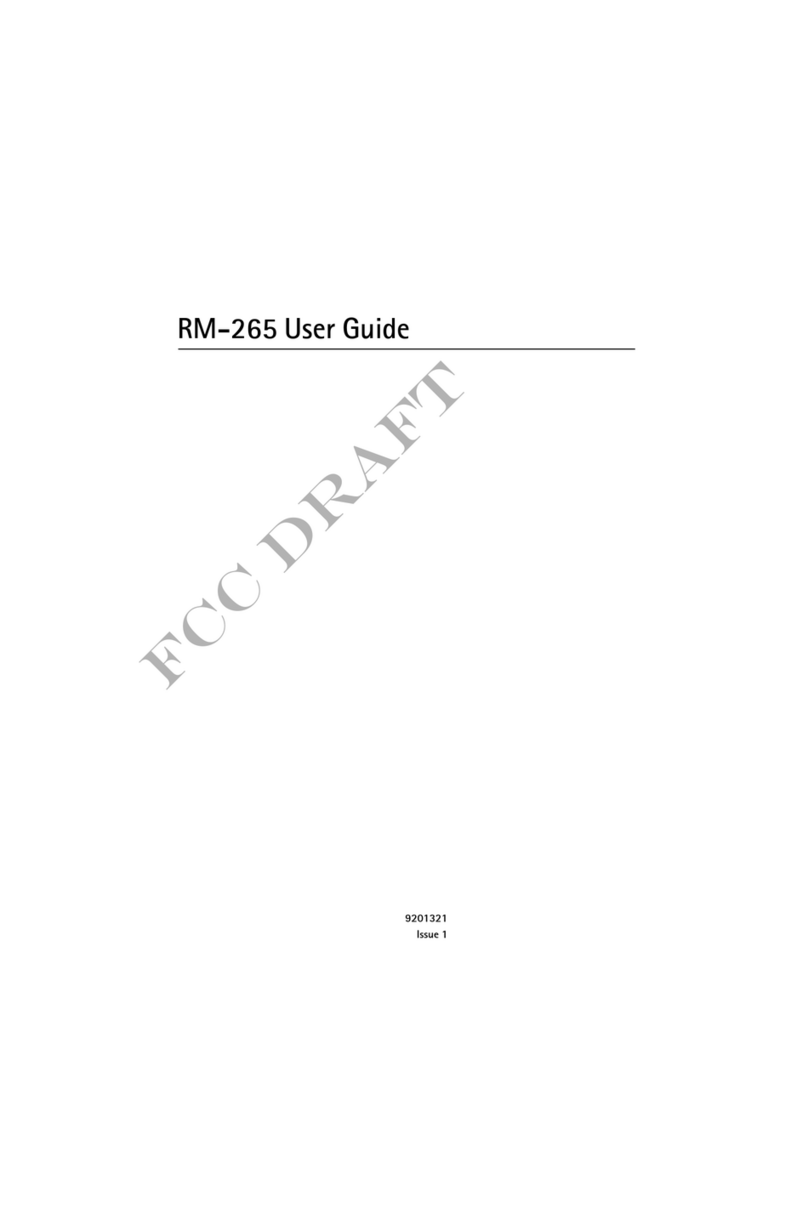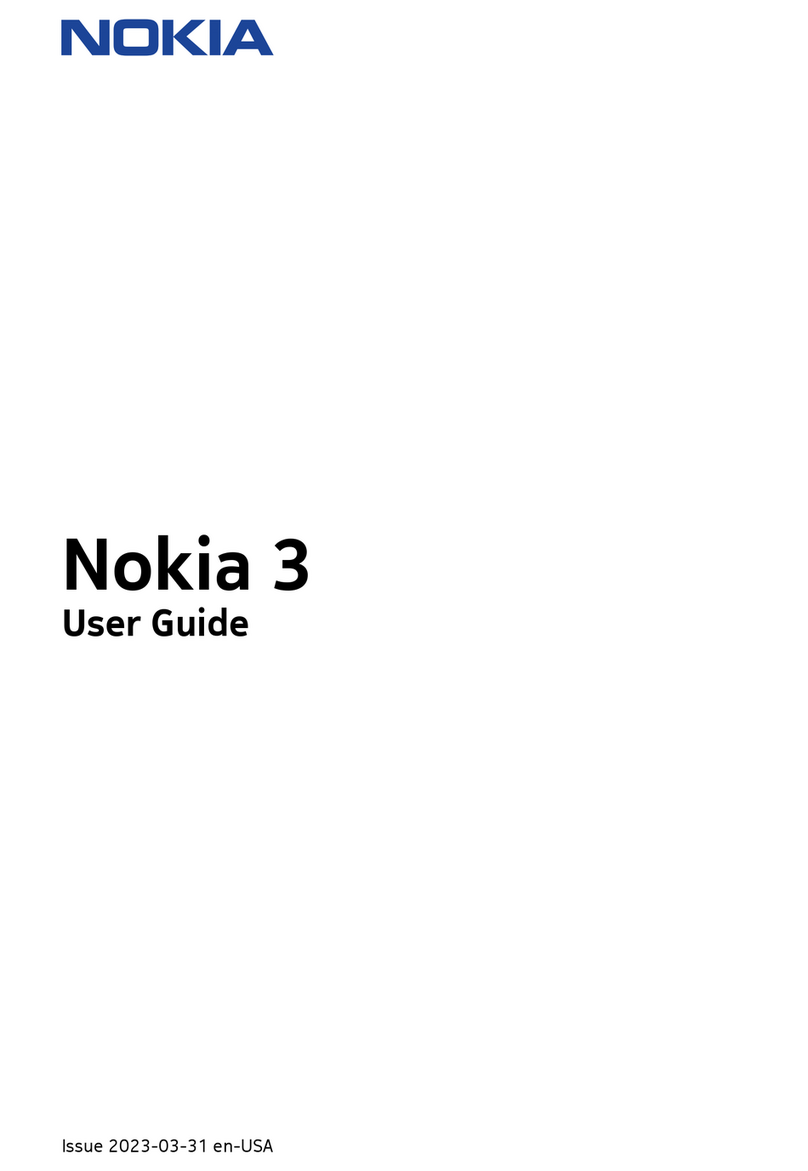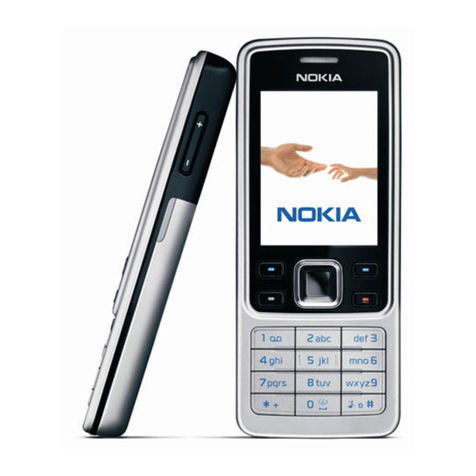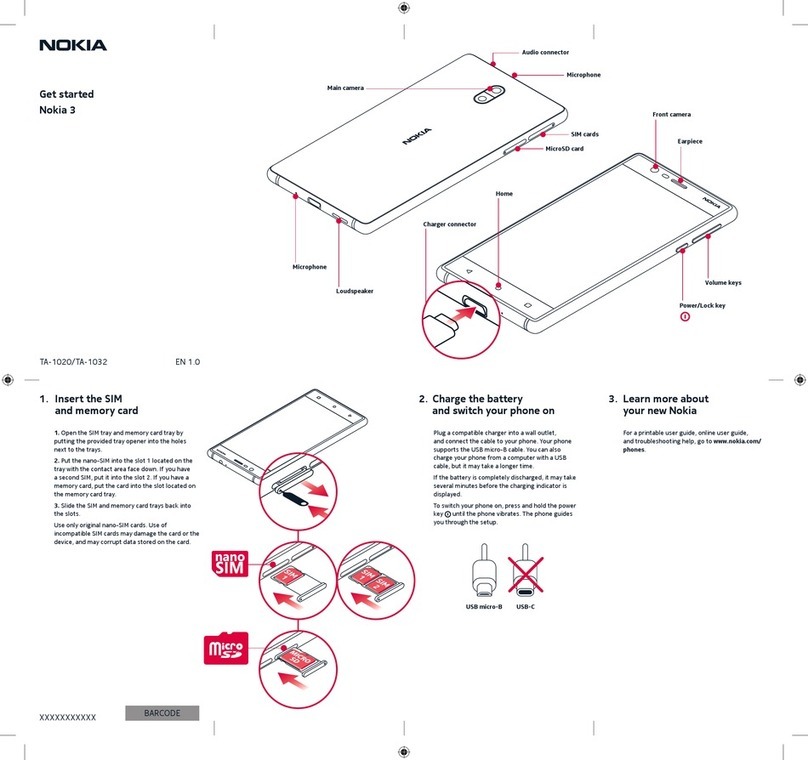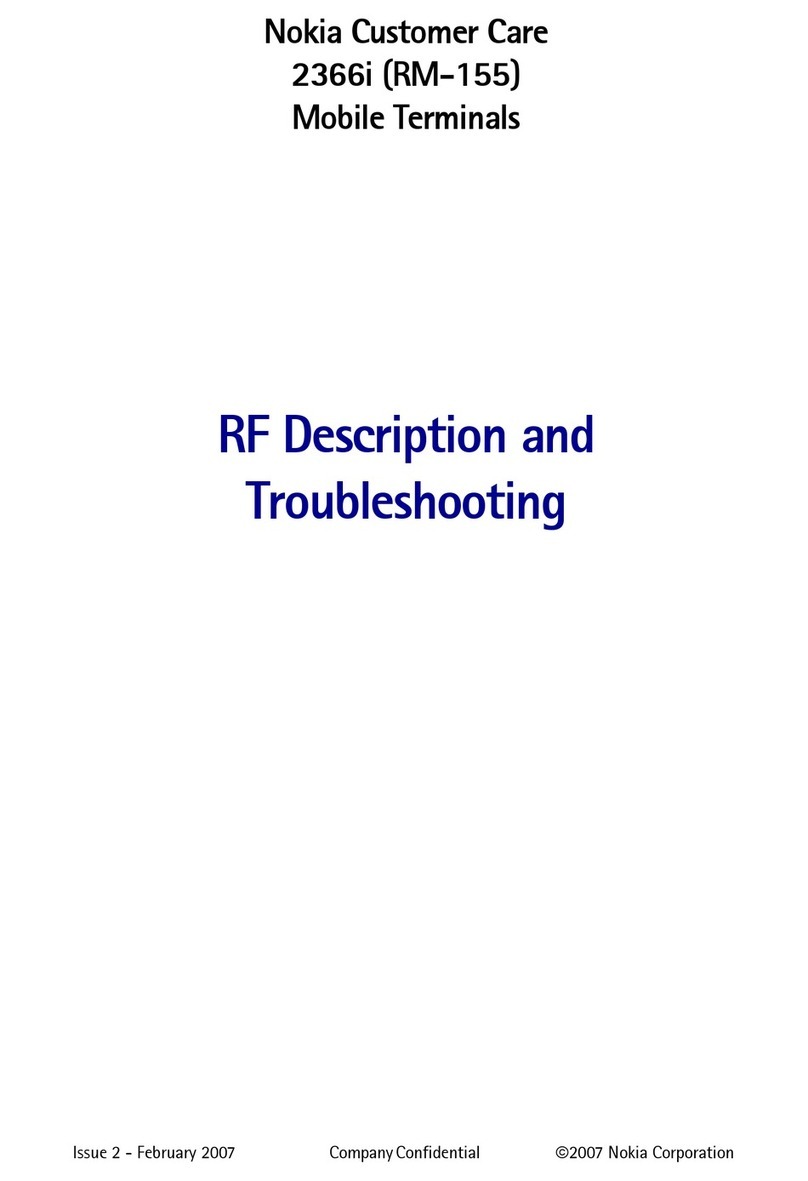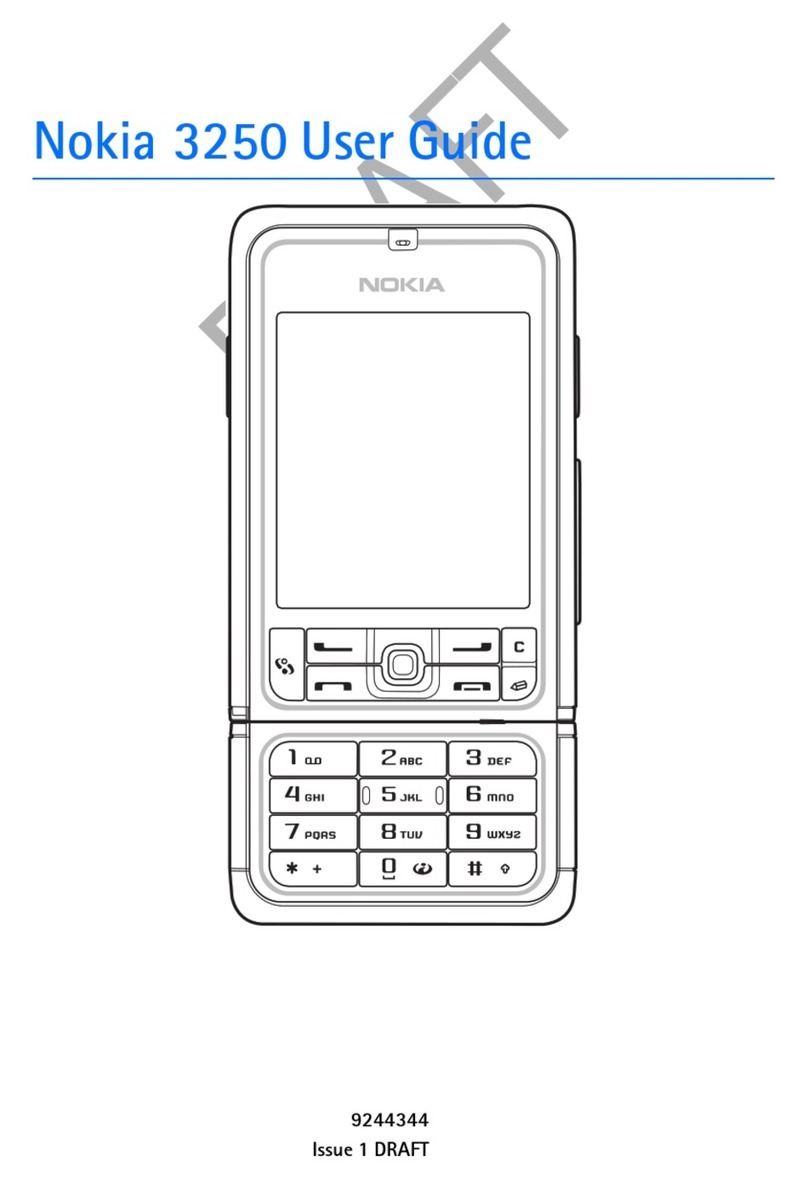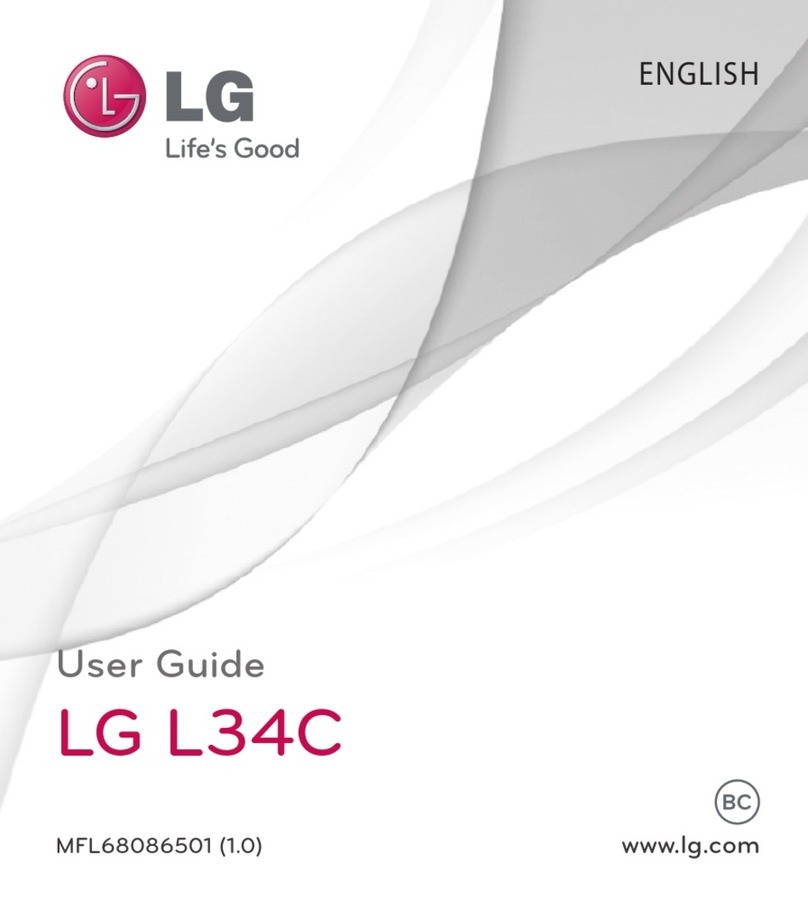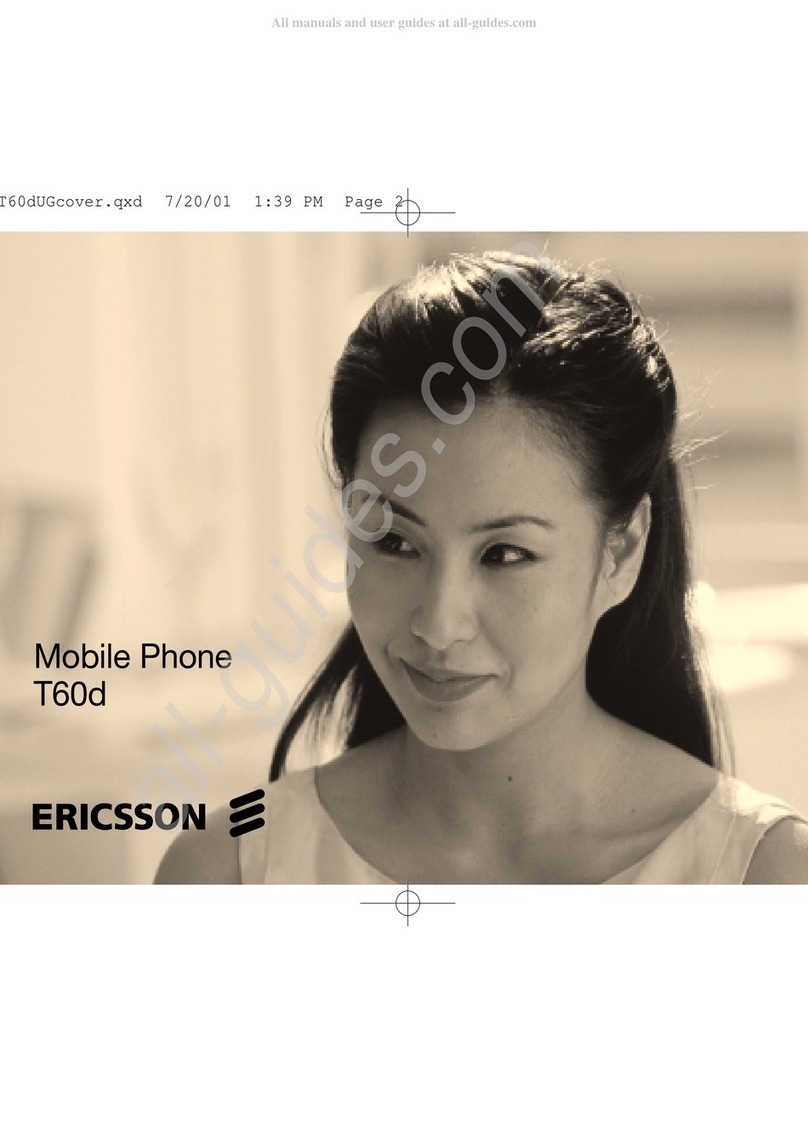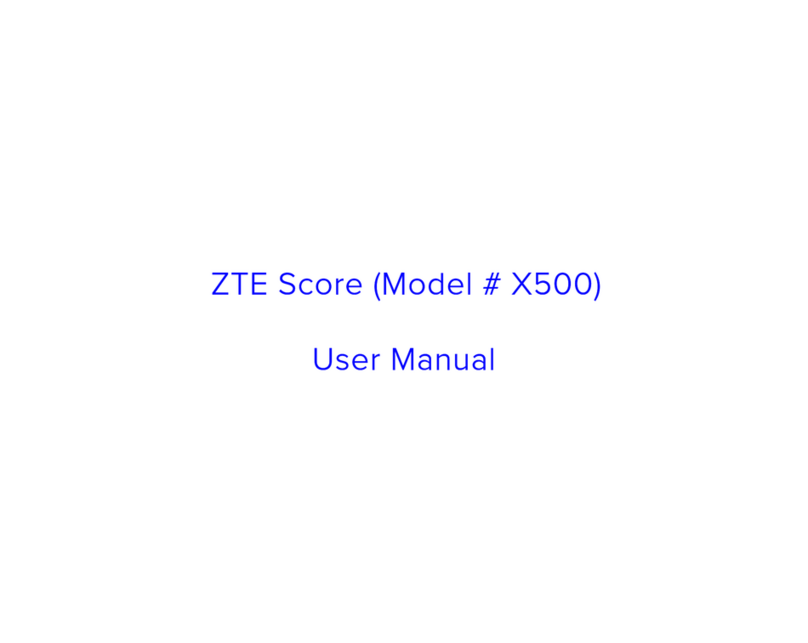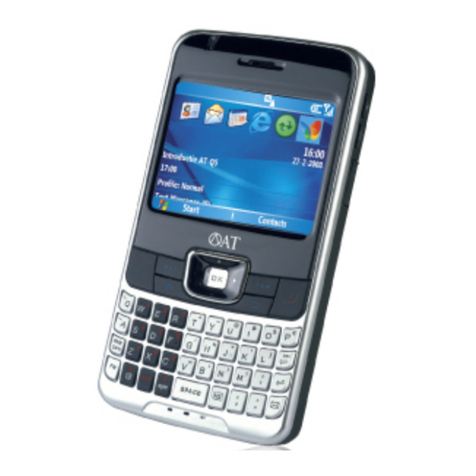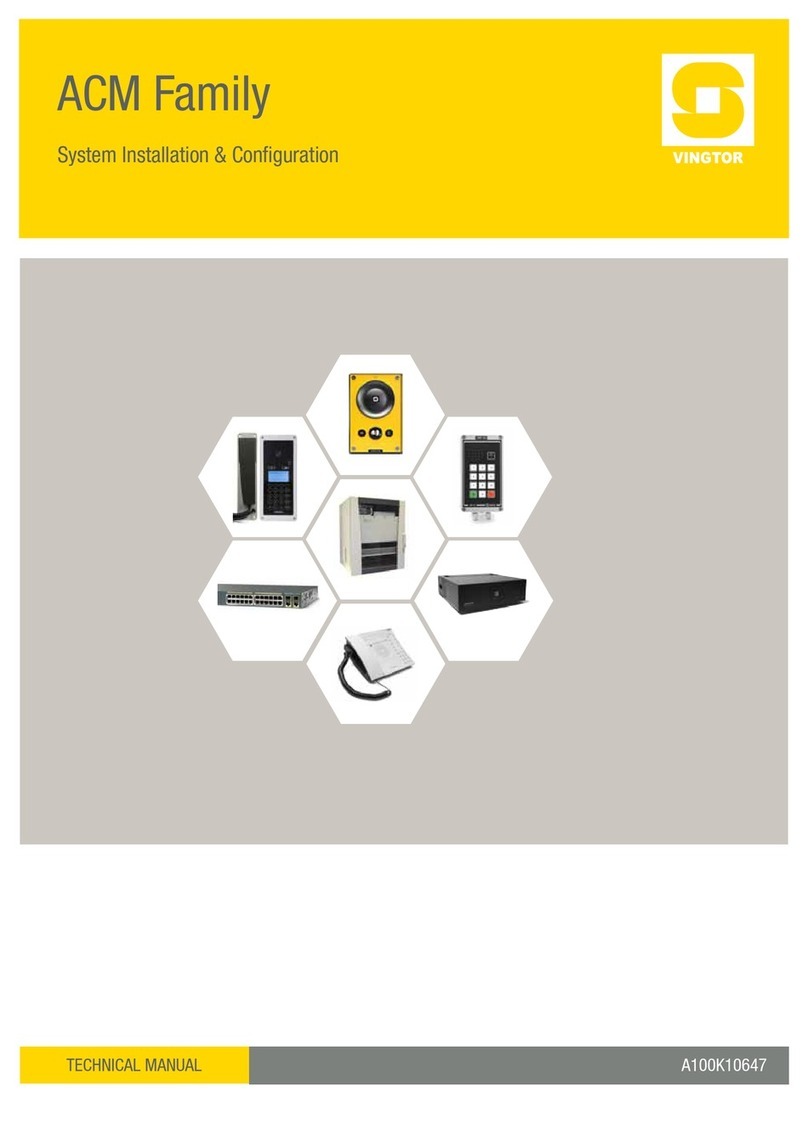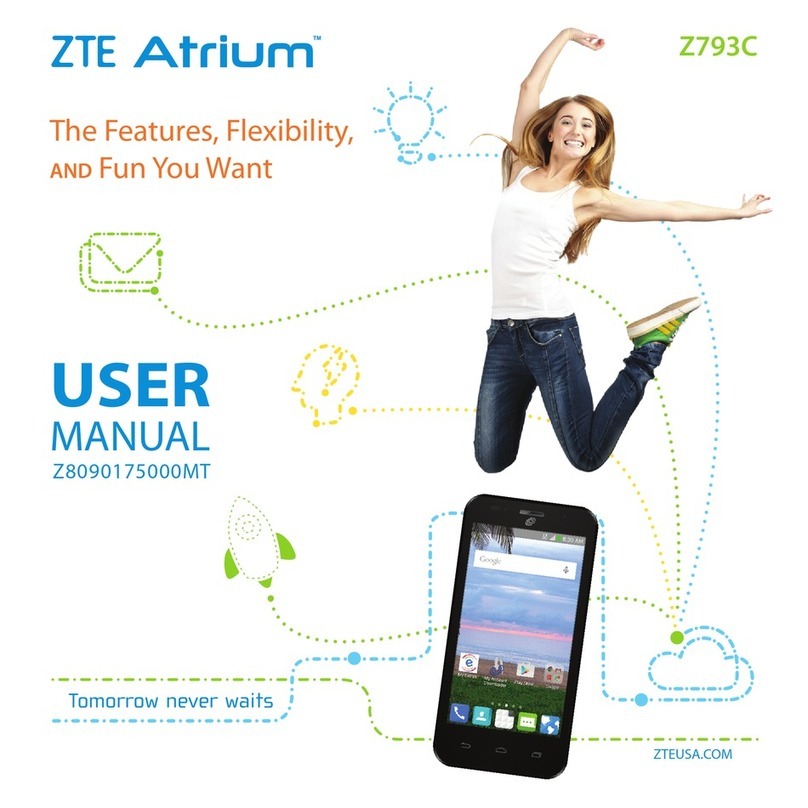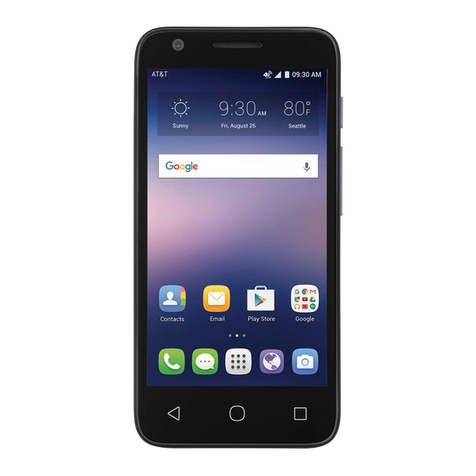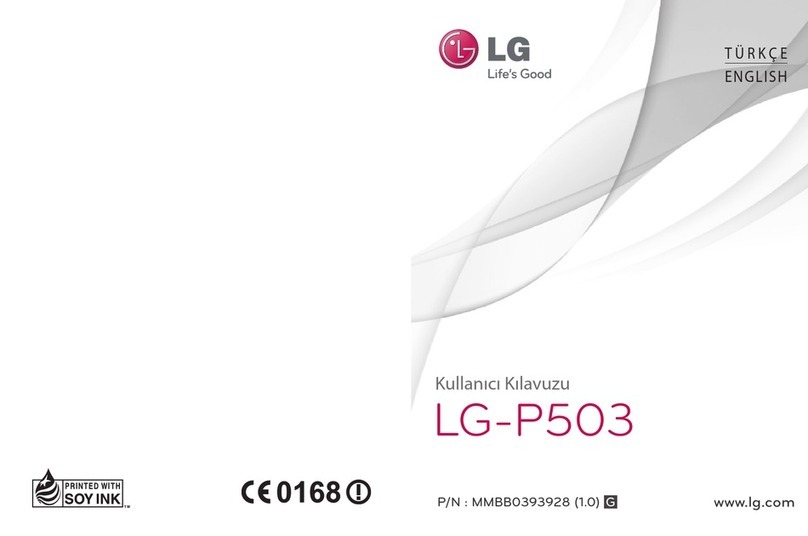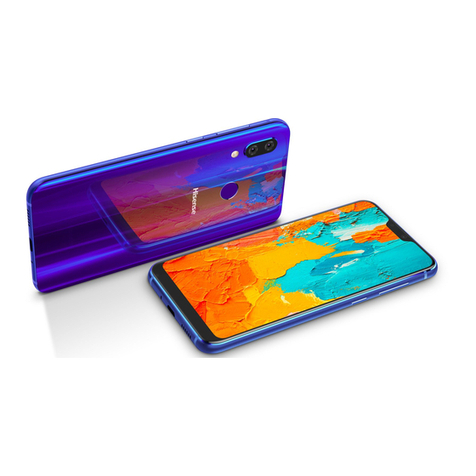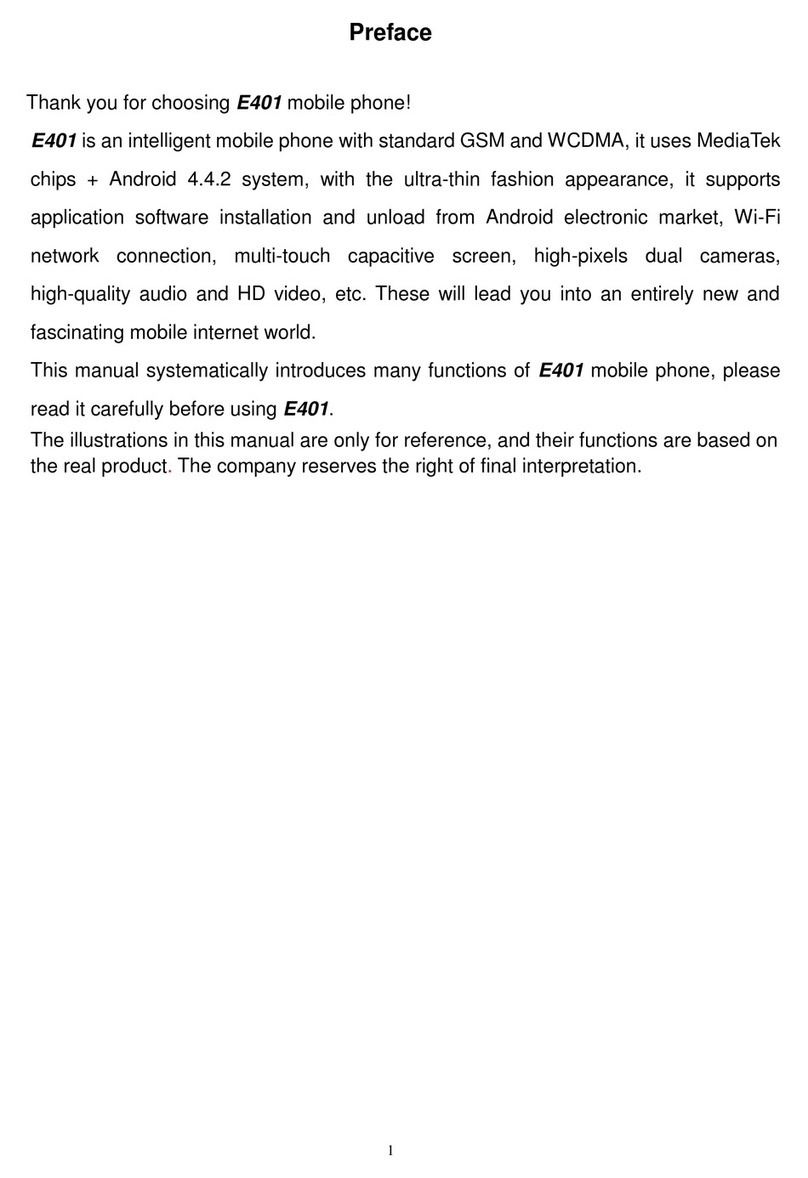
Product and safety info
Important: We invite you to read the enclosed instructions before installing
your equipment. For valuable information on the safe use of the device and
battery, read the Product and safety info booklet before you take your device into
use.
You can only use your device on the GSM 850/900/1800/1900; WCDMA 1/2/4/5/8;
LTE 2/3/4/7/12/17/28/38 networks. You need a subscription with a service provider.
Important: 4G/LTE might not be supported by your network service provider
or by the service provider you are using when traveling. In these cases, you
may not be able to make or receive calls, send or receive messages or use mobile
data connections. To make sure your device works seamlessly when full 4G/LTE
service is not available, it is recommended that you change the highest connection
speed from 4G to 3G. To do this, on the home screen, tap Settings > Mobile
networks, and switch Preferred network type to 2G/3G.
For more info, contact your network service provider.
Maximum transmit power
GSM 900 33 dBm
DCS 1800 30 dBm
WCDMA FDD I 24.5 dBm
WCDMA FDD VIII 24 dBm
LTE Band 3 24 dBm
LTE Band 7 24 dBm
LTE Band 28 24 dBm
LTE Band 38 24 dBm
Bluetooth 9 dBm
WLAN 2.4 GHz 18 dBm
WLAN 5 GHz 14 dBm
ANT+ 0 dBm
NFC 2 dBm
Your device has an internal, non-removable, rechargeable battery. Do not attempt to
remove the battery, as you may damage the device. To replace the battery, take the
device to the nearest authorised service facility.
Charge your device with FC0102 charger. HMD Global may make additional battery or
charger models available for this device. Third-party chargers that comply with the
applicable USB requirements, and that can connect to your device USB connector,
may also be compatible. Some of the accessories mentioned in this user guide, such
as charger, headset, or data cable, may be sold separately.
Note: The device is restricted to indoor use only when operating in the 5150 to
5350 MHz frequency range in the following countries:
The surface of this device is nickel-free.
Use only compatible memory cards approved for use with this device. Incompatible
cards may damage the card and the device and corrupt data stored on the card.
Note: Pre-installed system software and apps use a signicant part of
memory space.
Keep a safe distance when using the ash. Do not use the ash on people or animals
at close range. Do not cover the ash while taking a photo.
When this device has reached the end of its working life, all of its materials can be
recovered as materials and energy. Recycle packaging and user guides at your local
recycling scheme. When you cooperate and deliver all these materials to one of the
available collection sites, you contribute in helping the environment and help to
ensure the health of future generations.
All electrical and electronic products and batteries may contain recyclable metals
and other potentially hazardous substances and must be taken to their respective
collection sites at the end of their working life. Under no circumstances should you
break open a battery or other related materials. Do not dispose of these products as
unsorted municipal waste, as this may cause contamination of the environment or
risks to human health. All HMD Global products are in compliance with the applicable
industry international production standards and to all requirements dened by the
competent government agencies.
Certication information (SAR)
This mobile device meets guidelines for exposure to radio waves as set forth by
the Council of Europe (CE) and the Federal Communications Commission (FCC).
Refer to the following.
European RF Exposure Information
Your mobile device is a radio transmitter and receiver. It is designed not to exceed the
limits for exposure to radio waves recommended by international guidelines. These
guidelines were developed by the independent scientic organization ICNIRP and
include safety margins designed to assure the protection of all persons, regardless
of age and health. The guidelines use a unit of measurement known as the Specic
Absorption Rate, or SAR.
The SAR limit for mobile devices is 2.0 W/kg and the highest SAR value for this device
when tested at the ear is 0.321 W/kg*. As mobile devices oer a range of functions,
they can be used in other positions, such as on the body. In this case, the highest
tested SAR value is 1.55 W/kg* at the separation distance of 0.5 cm from the body.
For electronic safety, maintain the separation distance with accessories containing
no metal, that position handset a minimum of the above distance. Use of other
accessories may not ensure compliance with RF exposure guidelines.
* The tests are carried out in accordance with international guidelines for testing.
FCC RF Exposure Information
Your handset is a radio transmitter and receiver. It is designed and manufactured
not to exceed the emission limits for exposure to radio frequency (RF) energy set by
the Federal Communications Commission of the U.S. Government. The guidelines
are based on standards that were developed by independent scientic organization
through periodic and thorough evaluation of scientic studies. The standards include
a substantial safety margin designed to assure the safety of all persons, regardless
of age and health. The exposure standard for wireless handsets employs a unit of
measurement known as the Specic Absorption Rate, or SAR. The SAR limit set by the
FCC is 1.6 W/kg. The tests are performed in positions and locations (e.g. at the ear
and worn on the body) as required by the FCC for each model. The highest SAR value
for this model handset as reported to the FCC when tested for use at the ear is 0.8
W/kg, and when worn on the body in a holder or carry case, is 0.8 W/kg.
Body-worn Operation; This device was tested for typical body-worn operations
with the handset kept 1.5 cm from the body. To maintain compliance with FCC RF
exposure requirements, use accessories that maintain a 1.5 cm separation distance
between the user’s body and the handset. The use of belt clips, holsters and similar
accessories should not contain metallic components in its assembly. The use of
accessories that do not satisfy these requirements may not comply with FCC RF
exposure requirements, and should be avoided. The FCC has granted an Equipment
Authorization for this model handset with all reported SAR levels evaluated as in
compliance with the FCC RF emission guidelines. SAR information on this model
handset is on le with the FCC and can be found under the Display Grant section
of www.fcc.gov/oet/ea/ after searching on FCC ID 2AJOTTA-1027 and FCC ID
2AJOTTA-1044.
Additional information on Specic Absorption Rates (SAR) can be found on the FCC
website at www.fcc.gov/general/radio-frequency-safety-0.
To send data or messages, a good connection to the network is needed. Sending
may be delayed until such a connection is available. Follow the separation distance
instructions until the sending is nished.
During general use, the SAR values are usually well below the values stated above.
This is because, for purposes of system eciency and to minimise interference
on the network, the operating power of your mobile is automatically decreased
when full power is not needed for the call. The lower the power output, the lower
the SAR value.
Device models may have dierent versions and more than one value. Component and
design changes may occur over time and some changes could aect SAR values.
For more info, go to www.sar-tick.com. Note that mobile devices may be transmitting
even if you are not making a voice call.
The World Health Organization (WHO) has stated that current scientic information
does not indicate the need for any special precautions when using mobile devices.
If you are interested in reducing your exposure, they recommend you limit your
usage or use a hands-free kit to keep the device away from your head and body. For
more information and explanations and discussions on RF exposure, go to the WHO
website at www.who.int/peh-emf/en.
This device has an electronic label for certication information. To access it, select
Settings > About > Certication.
Electronical information of the device
Product Mobile phone
Supplier HMD Global
Model TA-1027/TA-1044
Charger FC0102
The following electrical characteristics apply to HMD Global FC0102 chargers
only:
Input 100-240 Vca 50-60 Hz 0-300 mA
Output 5.0 Vcc 0-2000 mA
Rechargeable battery supplier HMD Global
Phone power consumption 3,8 Vcc
Copyrights and other notices
Declaration of Conformity
Hereby, HMD Global Oy declares that this product is in compliance with
the essential requirements and other relevant provisions of Directive
2014/53/EU. A copy of the Declaration of Conformity can be found at www.nokia.
com/mobile-declaration-of-conformity.
FCC notice:
This device complies with part 15 of the FCC rules. Operation is subject to the
following two conditions: (1) This device may not cause harmful interference, and (2)
this device must accept any interference received, including interference that may
cause undesired operation. For more info, go to www.fcc.gov/engineering-
technology/electromagnetic-compatibility-division/radio-frequency-safety/faq/
rf-safety. Any changes or modications not expressly approved by HMD Global could
void the user’s authority to operate this equipment. Note: This equipment has been
tested and found to comply with the limits for a Class B digital device, pursuant to
part 15 of the FCC Rules. These limits are designed to provide reasonable protection
against harmful interference in a residential installation. This equipment generates,
uses and can radiate radio frequency energy and, if not installed and used in
accordance with the instructions, may cause harmful interference to radio
communications. However, there is no guarantee that interference will not occur in a
particular installation. If this equipment does cause harmful interference to radio or
television reception, which can be determined by turning the equipment o and on,
the user is encouraged to try to correct the interference by one or more of the
following measures:
• Reorient or relocate the receiving antenna.
• Increase the separation between the equipment and receiver.
• Connect the equipment into an outlet on a circuit dierent from that to which the
receiver is connected.
• Consult the dealer or an experienced radio/TV technician for help.
© 2017 HMD Global. All rights reserved. HMD Global Oy is the exclusive licensee of
the Nokia brand for phones & tablets. Nokia is a registered trademark of Nokia
Corporation.
Qualcomm is a trademark of Qualcomm Incorporated, registered in the United States
and other countries, used with permission.
Manufactured in China.
Importer (this information applies only in Mexico):
Grand cel S.A. de C.V.
106 Avenida Calle Corona
Colonia Cervecería Corona
Naucalpan
Edo de México
CP 53330
RFC: GCE1410146Y9
